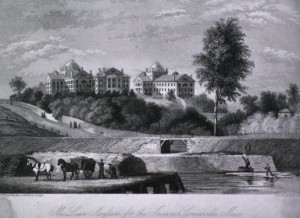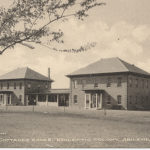Though Dr. Harry R. Hummer’s medical and psychological experience did not guarantee the best care for patients at the Canton Asylum for Insane Indians, at least he had the proper background for the position he held. The asylum’s first superintendent, Oscar Gifford, had no medical training at all. The Indian Office bears exceptional fault for appointing someone without the obvious qualifications to head a medical facility; by 1902, it was nearly incomprehensible that an insane asylum superintendent would not also have a psychiatric background.
In contrast, the McLean Asylum for the Insane in Massachusetts was a premier establishment that catered to wealthy families who could afford to give their loved ones the best of care. Its staff administered typical therapies for the time: calomel, Epsom salts, opium products, and various purges, along with rest and recreation designed to calm patients and help them keep their minds off their troubles. Recreation could include sewing and reading, billiards, tennis, strolls through manicured gardens, carriage rides, trips into town, and art appreciation classes. But, despite its country club atmosphere, between 1888 and 1892, McLean established laboratories that combined biological chemistry, physiological psychology, and psychiatry, and were perhaps rivaled by only Professor Emil Kraepelin’s laboratory in Heidelberg, Germany.
______________________________________________________________________________________









I agree. Though much was done in ignorance, I can’t understand how someone didn’t think about the purely physical aspect of some of the standard psychiatric treatments. One that sounds especially appalling is the “continuous bath” treatment, which means just what it says. Doctors kept patients in baths sometimes for days–can you imagine?
Very sad! I have always wondered about my g grandmother and the treatments she received. Shock treatment was probably a given during her time in the early 1930’s BUT it unthinkable the torture the patients endured during the late 1800’s. Heavy heart and Loud sigh…